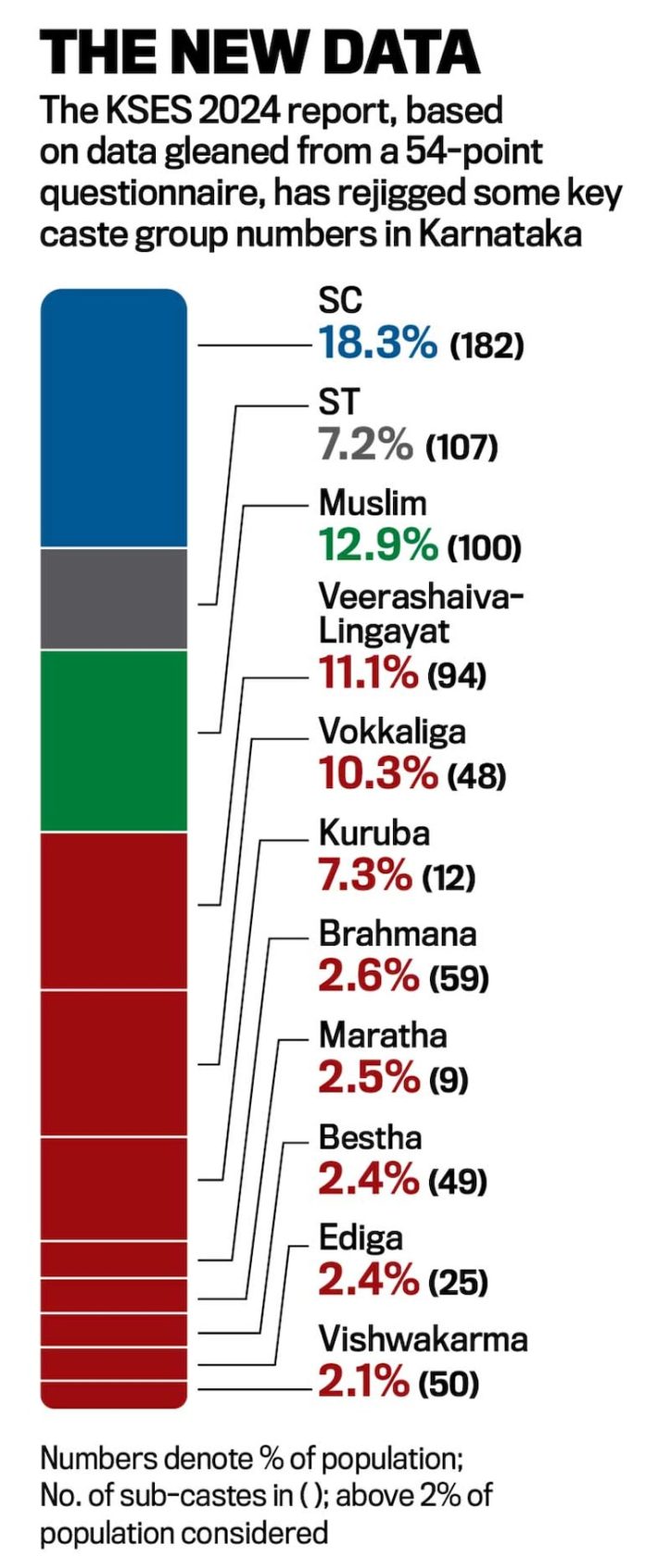Bengaluru: The Karnataka government’s decision to discard the findings of the 2015 Social and Educational Survey, commonly referred to as the caste census, has stirred fresh political and social debate across the state. The data, which remains locked within a government department, was abandoned amidst mounting pressure from dominant caste groups, notably the Lingayats and Vokkaligas, who have historically opposed such exercises, as per a report by the Newsminute.
This survey, carried out by the Kantharaj Commission, is the fourth of its kind in over a century. Yet, unlike its predecessors, it has not been made public — a move seen by political observers and social justice activists as a significant win for dominant caste lobbies.
According to reports, the 2015 survey covered 94% of Karnataka’s population. It aimed not to count castes per se but to gather socio-economic indicators to assess the level of backwardness across communities — such as land ownership, employment in public and private sectors, and educational attainments.
However, powerful caste lobbies like the Akhila Bharata Veerashaiva Mahasabha, Karnataka Rajya Vokkaligara Sangha, and Akhila Karnataka Brahmin Mahasabha claimed the survey was “unscientific,” alleging underrepresentation of their communities. Despite evidence to the contrary, their voices gained dominance, both in public discourse and the media.
When questioned about how a survey that nearly covered the entire state could be termed unscientific, leaders from these associations offered anecdotal rebuttals. Kenchappa Gowda, President of the Vokkaligara Sangha, claimed that many people he knew hadn’t been surveyed. Critics argue these claims mask a deeper discomfort: the potential revelation that dominant castes are overrepresented in government and political spheres.
Academic A. Narayana from Azim Premji University stated that the government’s mishandling — including its failure to clarify the difference between a “survey” and a “census” — sowed confusion. “Had the government communicated better, this would be seen as an excellent socio-educational survey with 95% coverage,” he said.
Under Sections 9(1) and 9(2) of the Karnataka State Backward Classes Commission Act, 1995 — derived from the Supreme Court’s Indra Sawhney judgement — the government is mandated to conduct such surveys every 10 years. The 2015 survey was the first in decades, yet it was dismissed on the grounds of being “outdated.”
The role of the media has also come under scrutiny. While a few newspapers like Prajavani and Vartha Bharathi published critical opinions, most Kannada media outlets echoed the narrative set by the dominant castes, labelling the survey “flawed.”
Former journalist and Siddaramaiah’s ex-media advisor, Dinesh Amin Mattu, noted the lack of Dalit representation in media and pointed to ownership patterns — with major dailies owned by Brahmins and Lingayats — as factors for biased reporting.
Opposition to caste-based surveys and reservations in Karnataka is not new. Since the 1960s, dominant castes have resisted inclusion in backward class lists and rejected reports from multiple commissions including those of Havanur, Venkataswamy, and Chinnappa Reddy — all of which at various times excluded Lingayats and Vokkaligas based on data showing their social and political advancement.
In most cases, these recommendations were diluted or discarded due to political agitations and electoral considerations. Notably, the Chinnappa Reddy Commission in 1990 had concluded that Lingayats, Vokkaligas, and Brahmins were significantly overrepresented in politics and government jobs.
Despite its limitations — such as the absence of caste-wise employment data in government institutions — the 2015 Kantharaj survey holds valuable insights. With over 40 volumes of digitized, searchable information, it provides detailed profiles of caste-wise economic, educational, and occupational realities.
KN Lingappa, a former member of the Backward Classes Commission, remarked, “These groups resisted the data’s release because it would threaten their political supremacy. It would prompt uncomfortable questions about electoral representation and resource distribution.”
In 1994, under pressure from dominant caste agitations, then CM M Veerappa Moily reorganized reservation categories, effectively including Lingayats and Vokkaligas under newly created backward classes lists (3A and 3B). Many saw this as a political move rather than one based on empirical evidence.
Today, the same pressures continue to shape public policy. The government’s recent announcement that it will conduct a fresh survey — citing the outdated nature of the 2015 data — is seen by many as an attempt to bury inconvenient truths.
Activists and academics continue to demand that the survey be made public. As Mattu aptly put it, “The data may be a decade old, but caste doesn’t change. Public money was spent. The public deserves to know.”




